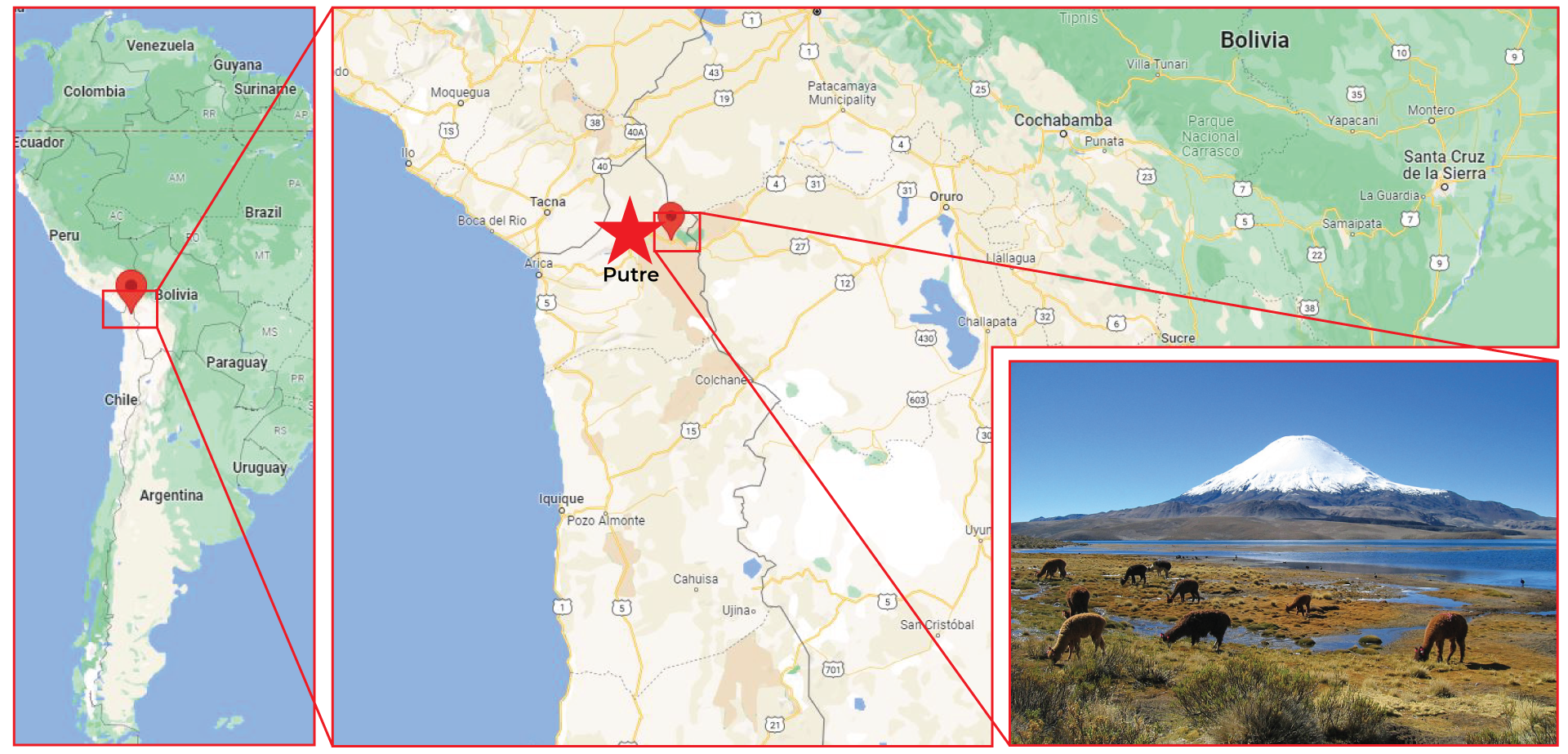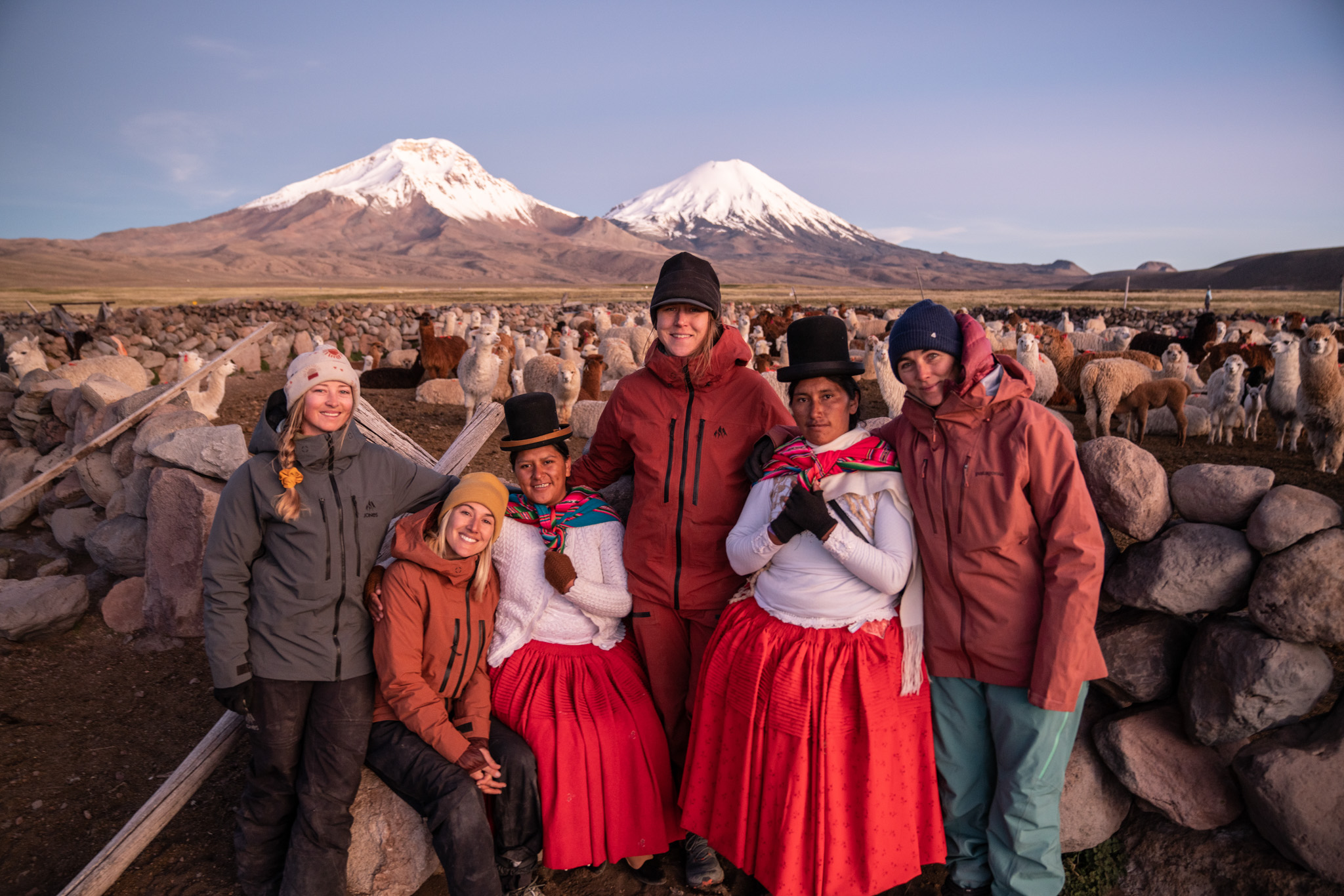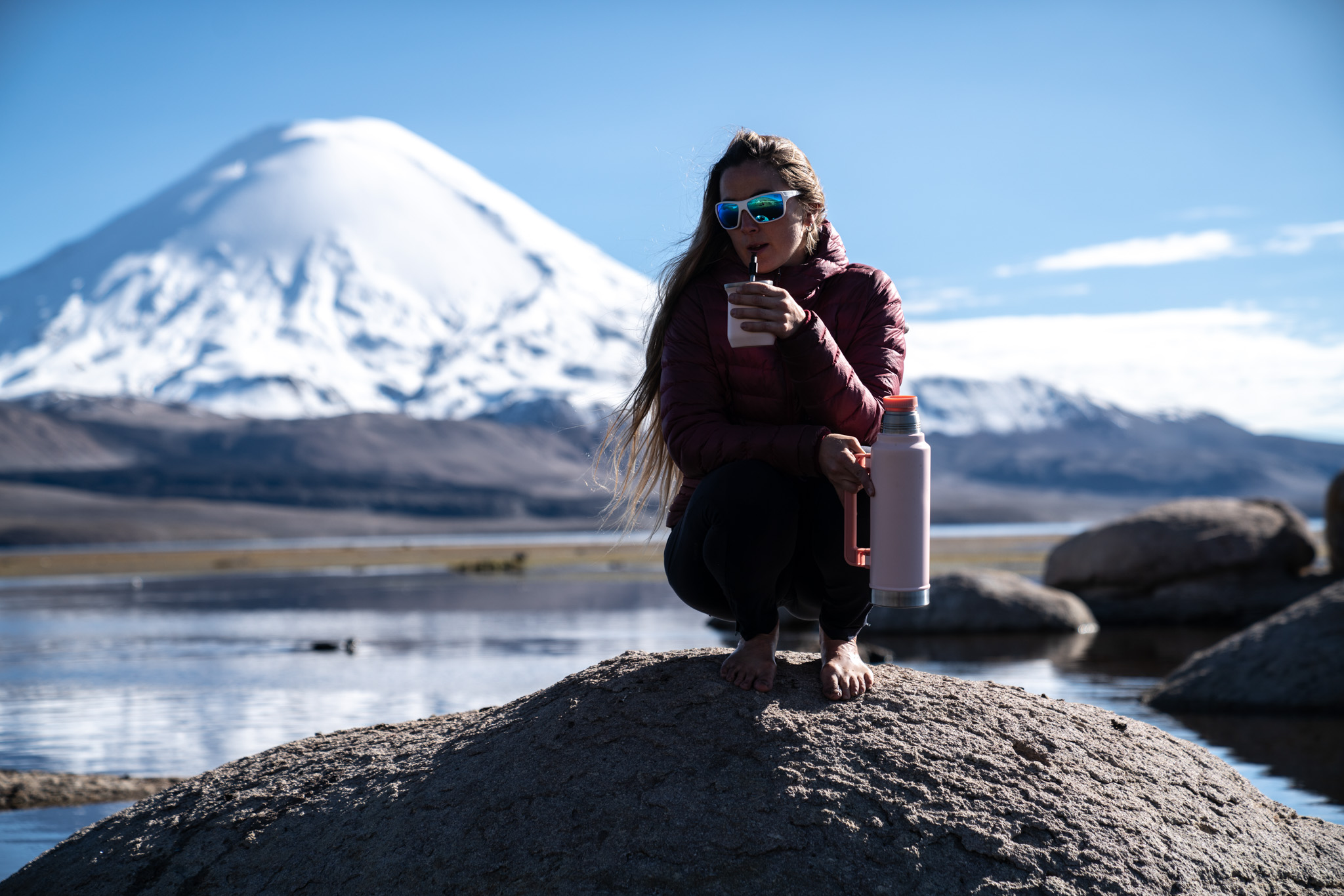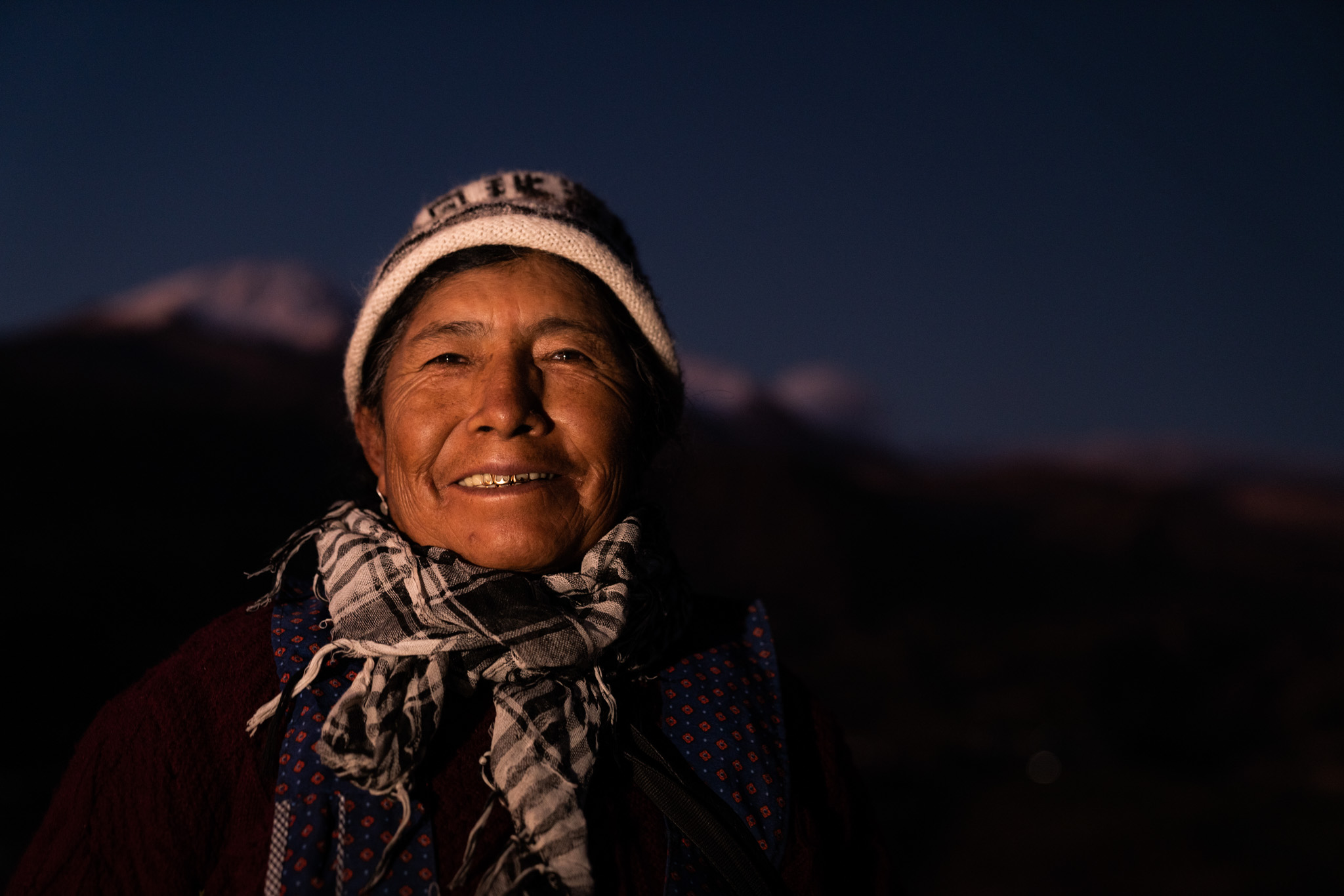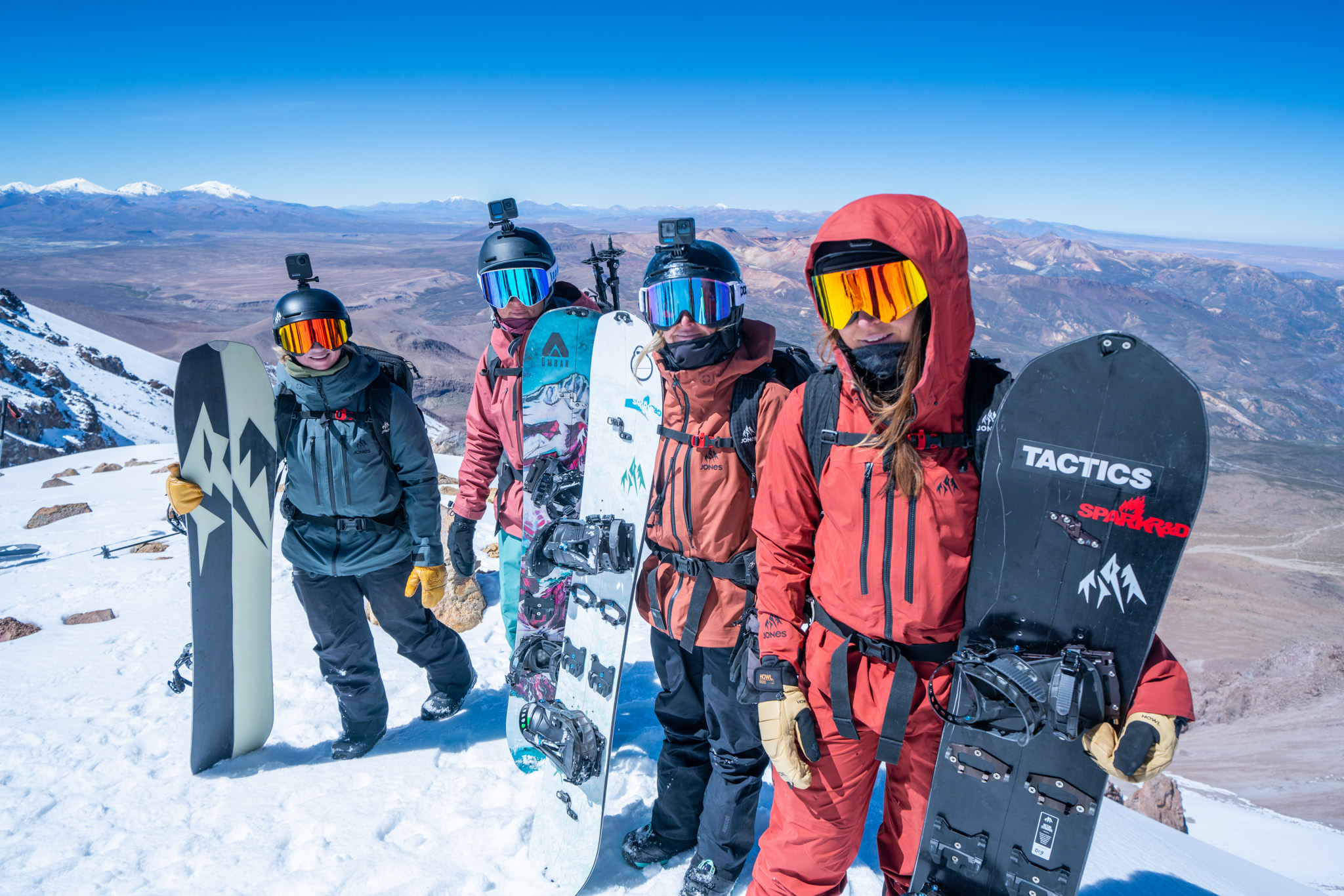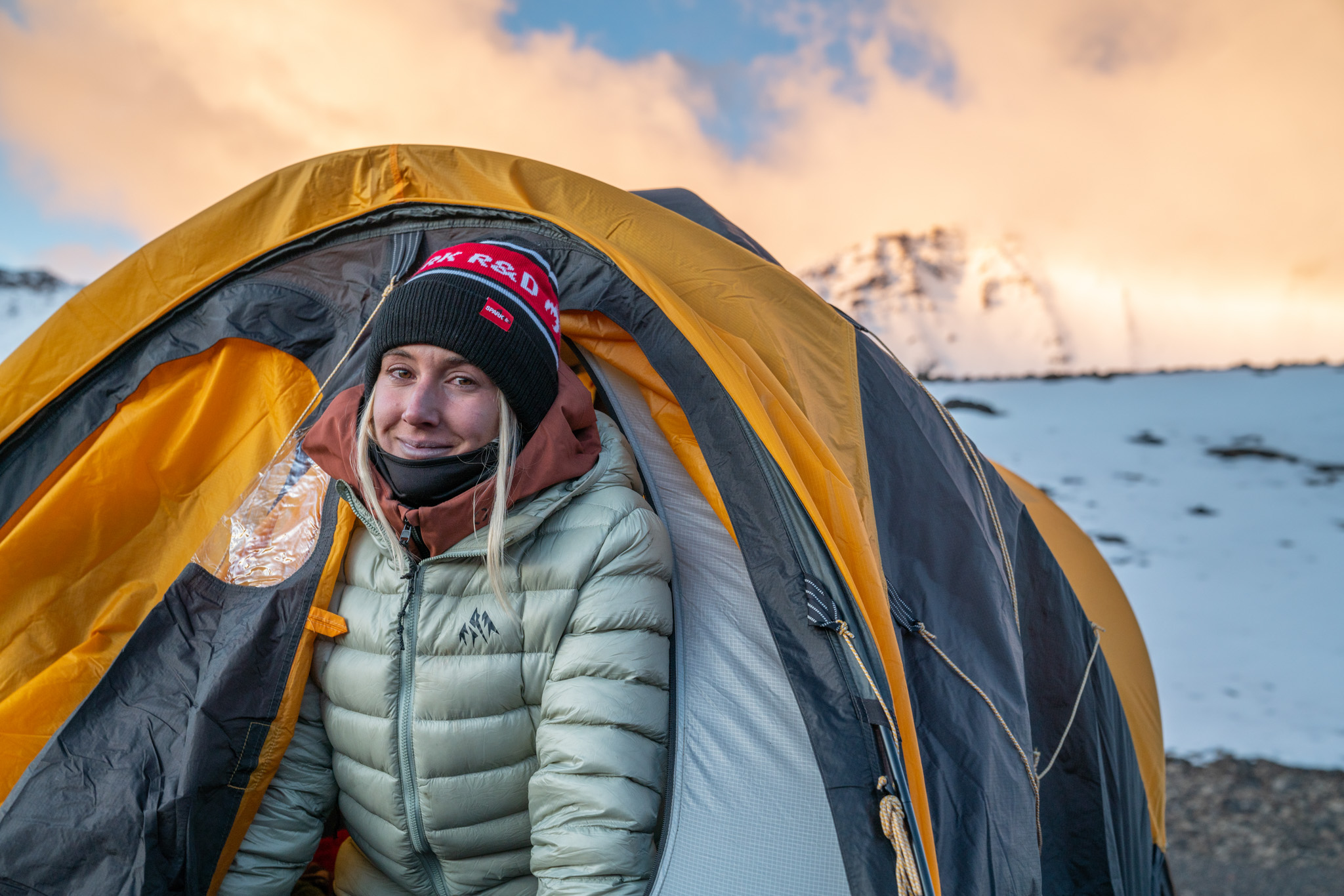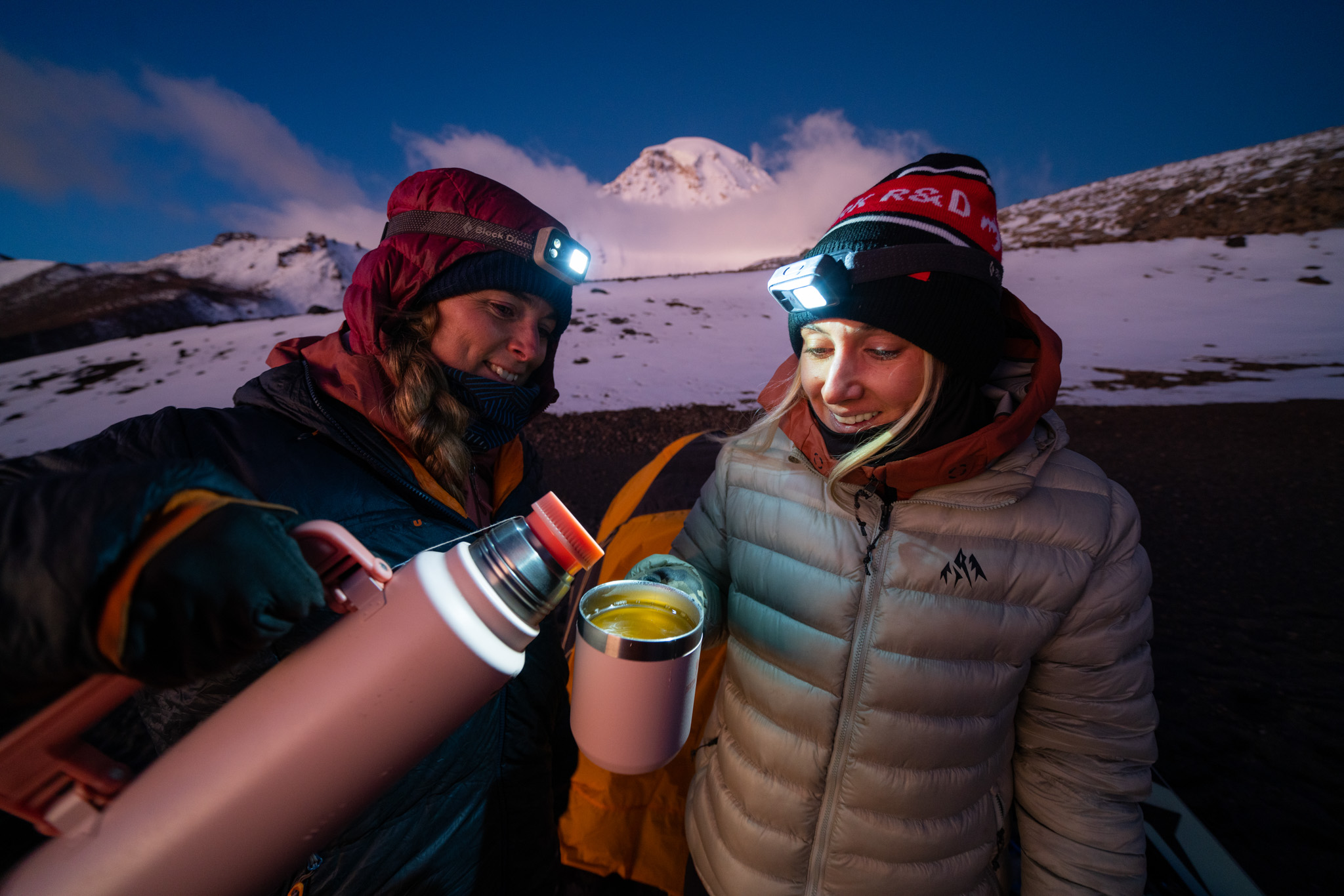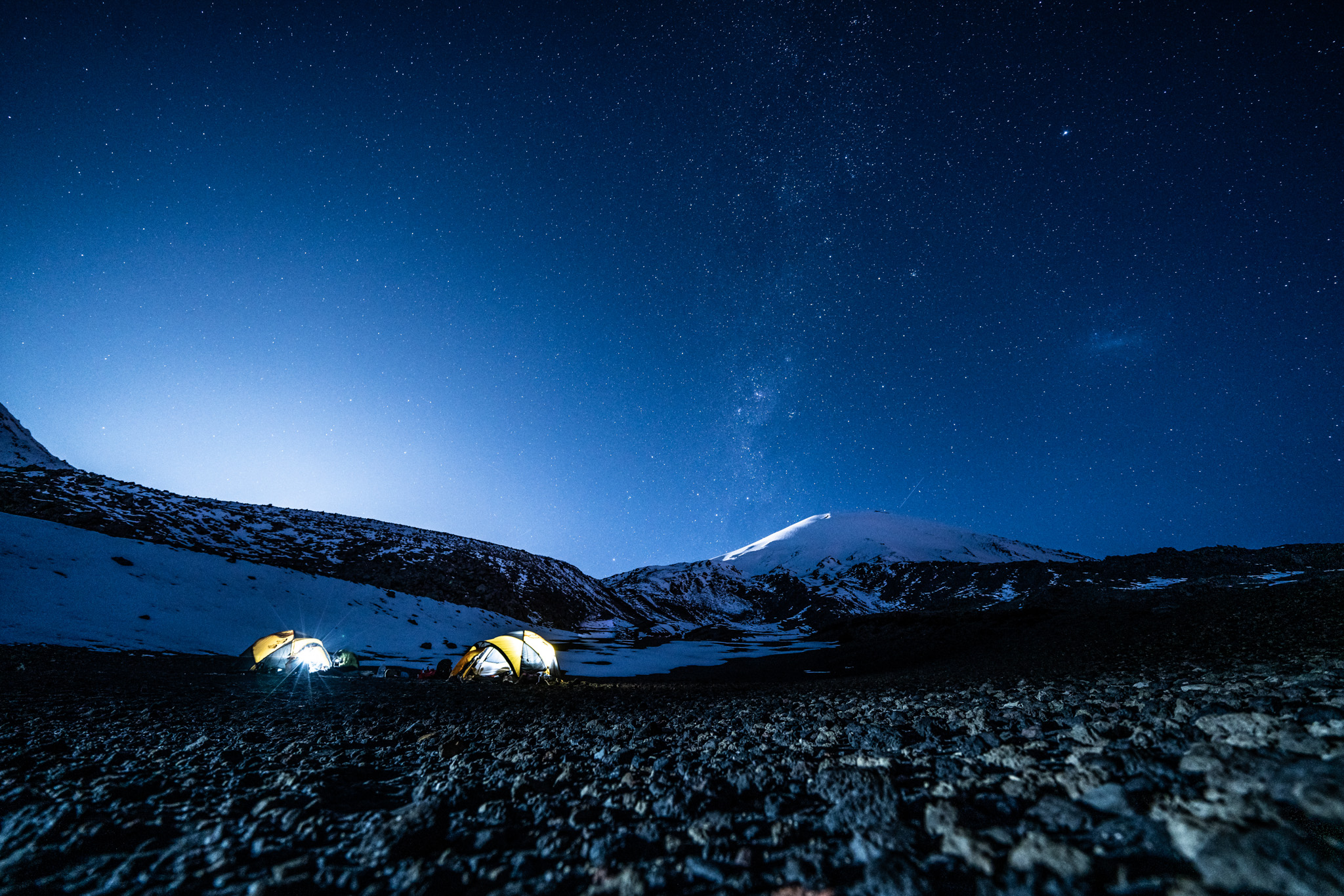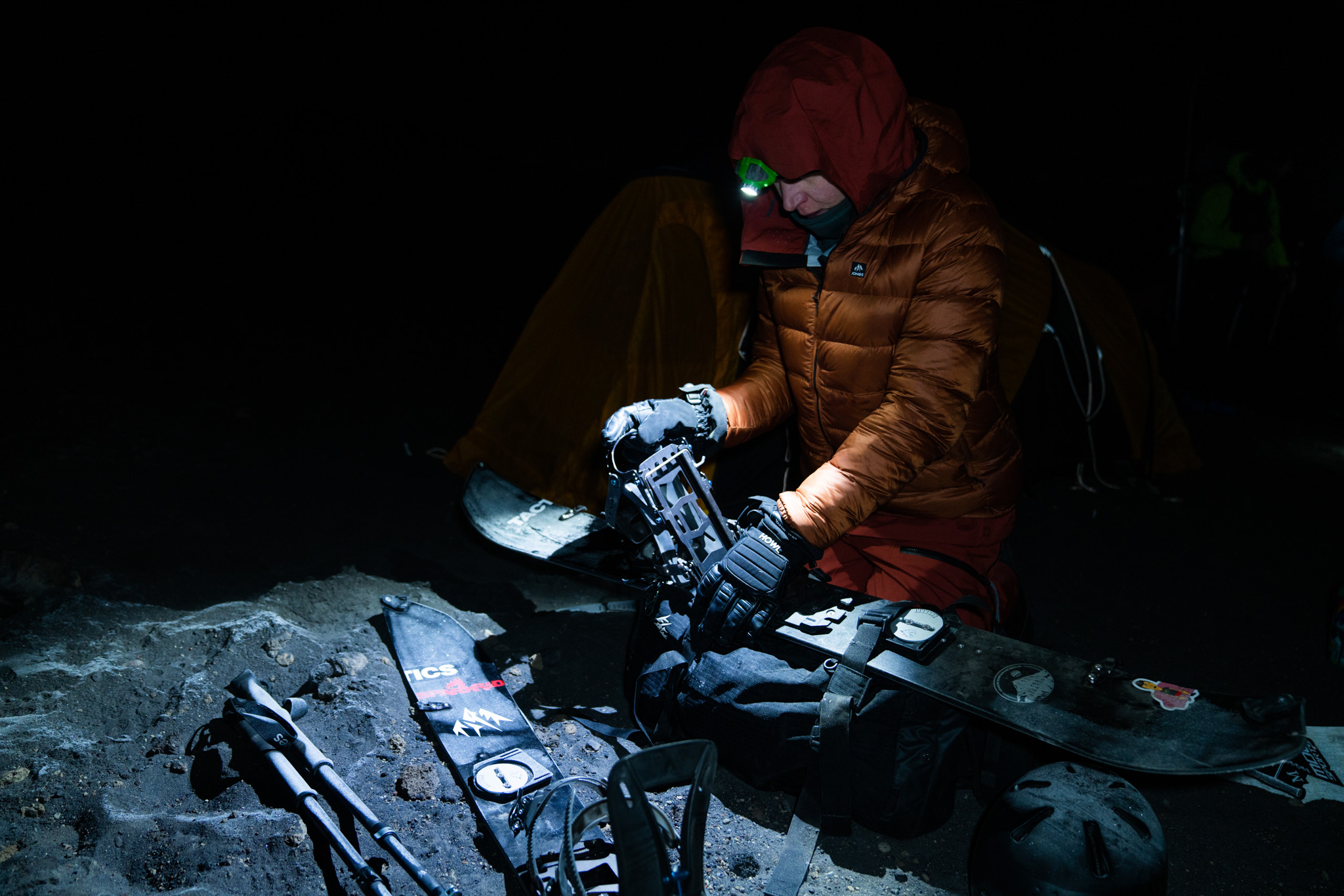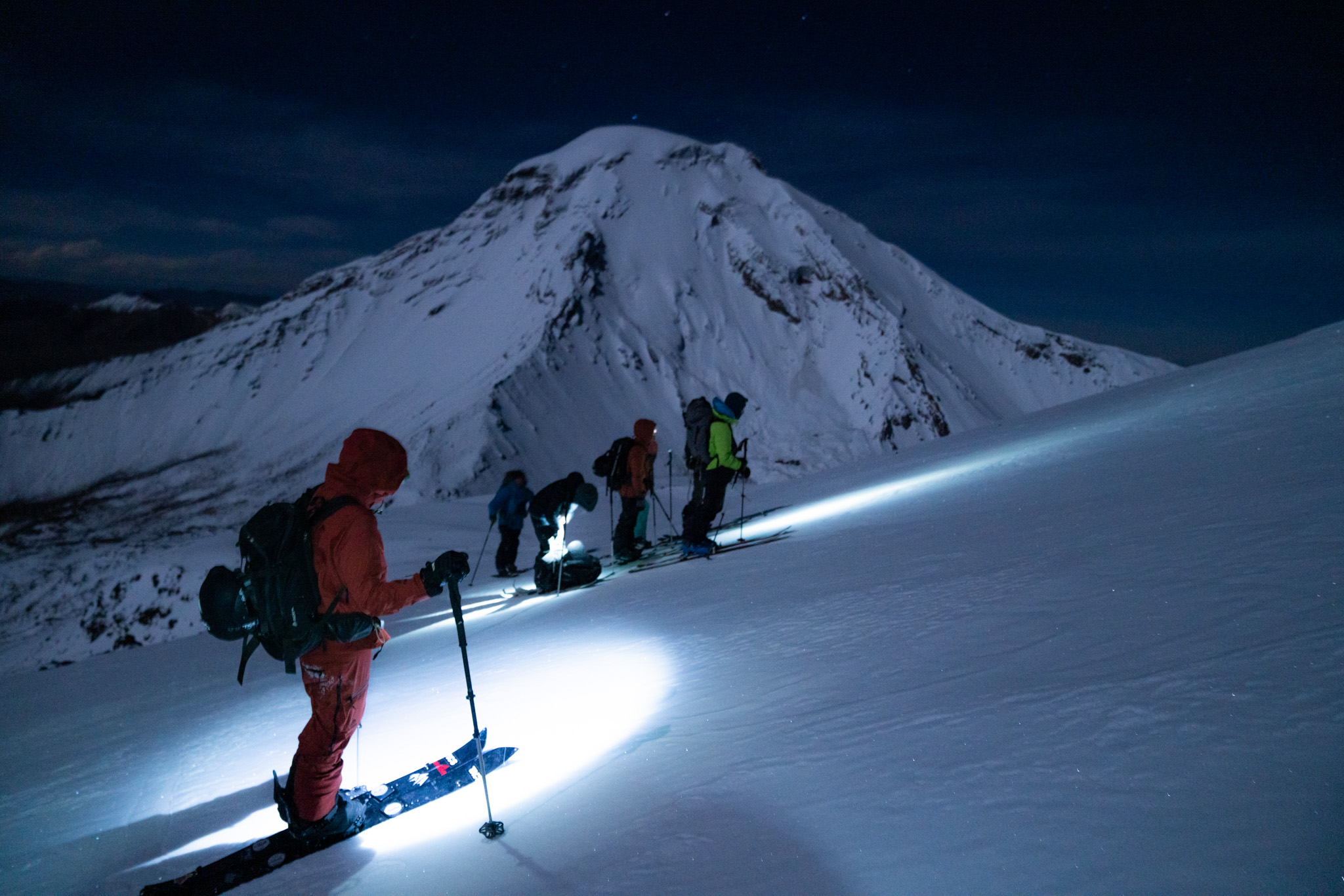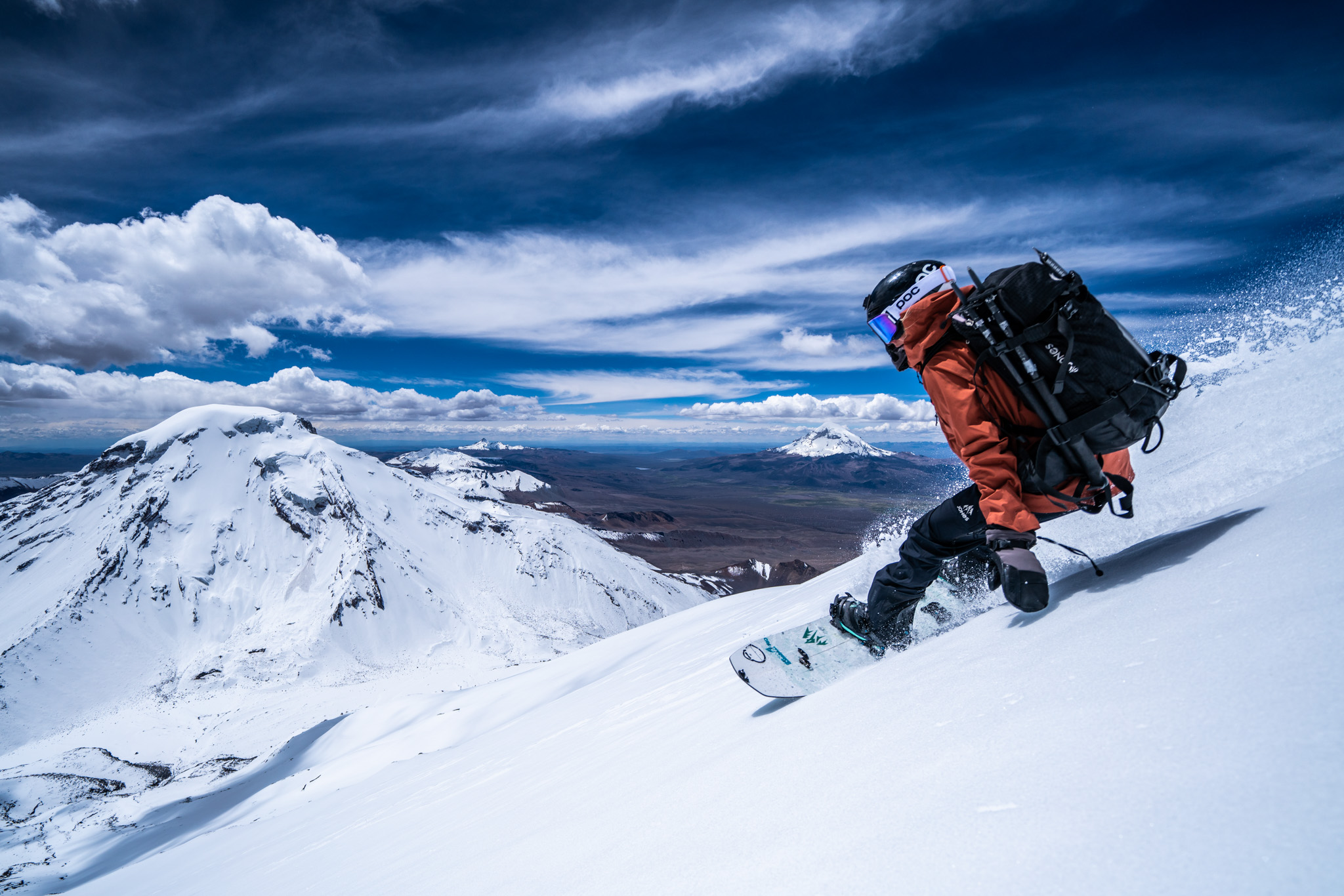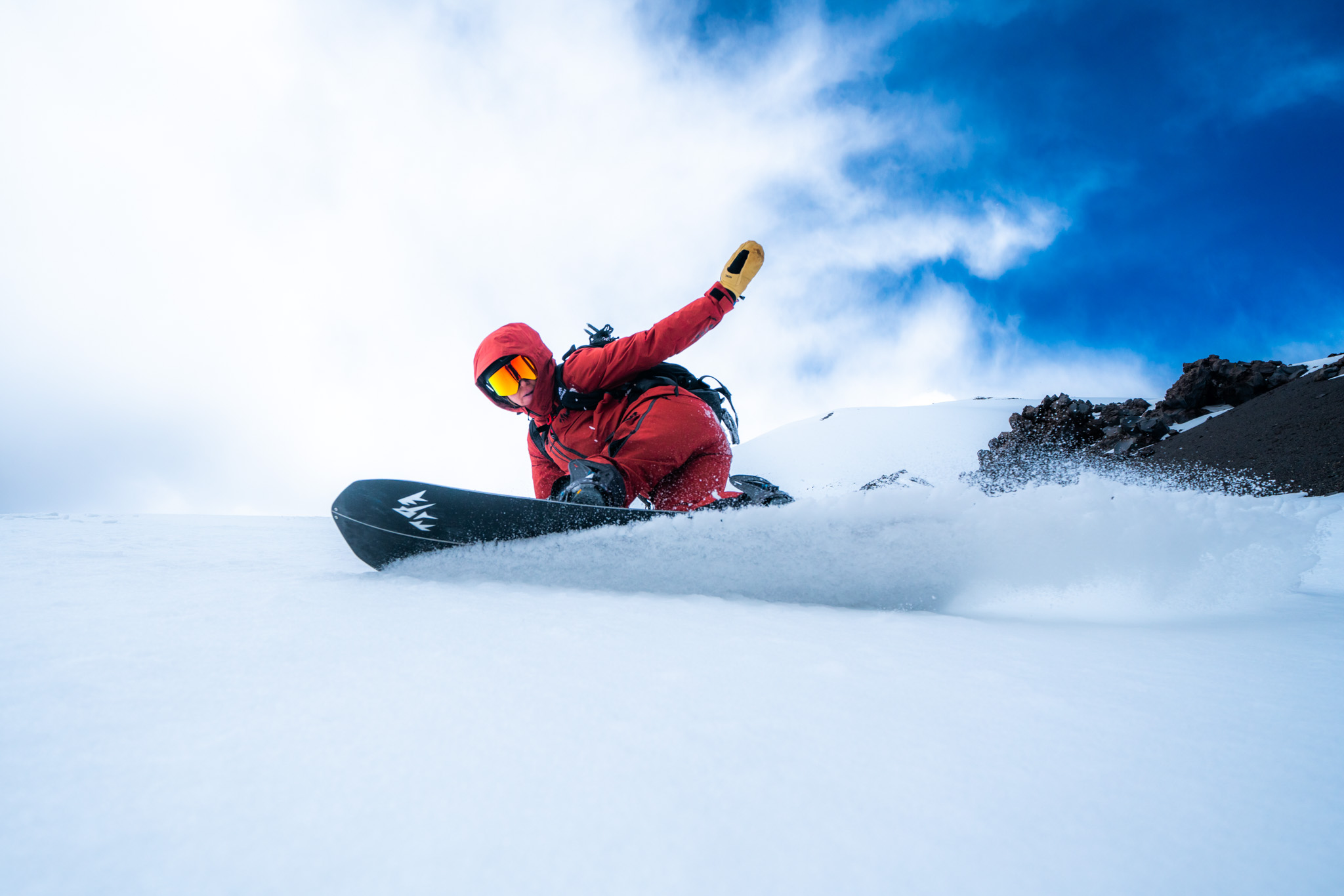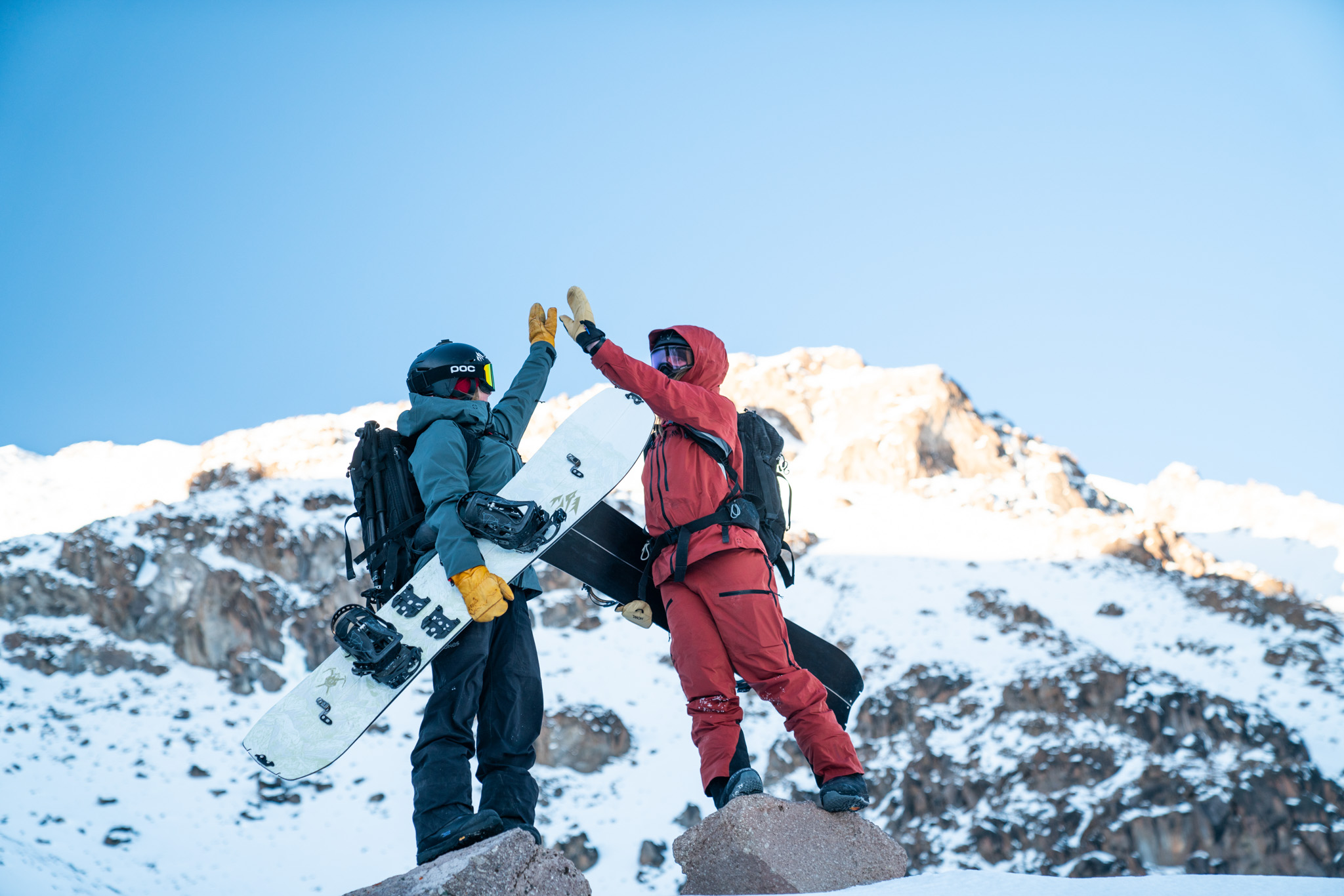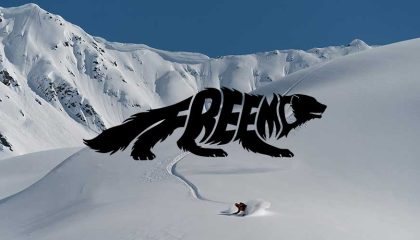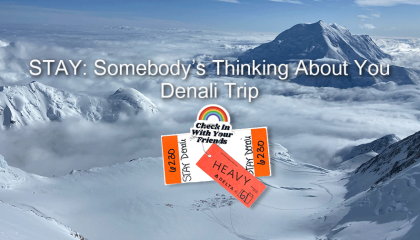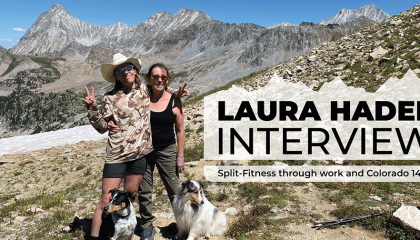
Dedicated to pushing innovation in splitboarding since 2006.
866.725.2085
Email: sales@sparkrandd.com
Spark R&D
P.O. Box 3284, Bozeman, MT 59772 USA
Parinacota is a striking strato-volcano on the border of Chile and Bolivia that towers over the Andean Altiplano (high plains). It caught the eye of Antonia Galmez in a photograph and she began hatching a plan to summit and ride the remote and majestic mountain. She assembled a team and rode the volcano in the spring of 2023 (South American Fall). The film Payachatas documents everything that went into this incredible undertaking.
Anto goes into detail in the below interview about the challenges and the triumphs of this project!

When did you start thinking about this project and mission?
AG: Everything started when walking with Xabier (filmer and producer) in Santiago (Chile). We came across a photo of Parinacota volcano on the street. We were blown away. From that minute on I couldn't get the volcano out of my head. I started to Google it, to investigate, to look for records of snowboarding descents on the internet, but I found nothing.
I began to smell the challenge and I decided to organize a project to go. I was motivated to make an audiovisual project. Parinacota volcano is in a place in Chile where very few people go skiing or snowboarding, and the world doesn't even know about it. I wanted to make the place known, to make Chileans and foreigners fall in love with the high peaks in our desert.
Its location is in the middle of the desert, where there are summits at more than four thousand meters, full of snow and unexplored. It was a beautiful project to explore my country and show it to the world.
So the volcano's name is Parinacota, where did the name of the film come from?
AG: Payachatas means twins in Aymara, the native language of the area. Twins because the Parinacota is in front of another volcano, the Pomerape (20,620 feet / 6,285 meters), and they are often called twins.
Can you talk about preparing for a big mission like this? What happened well before you made your way to the summit?
AG: It was not easy, there were many months of organization. The first thing I had to do was to look for financing, and thanks to Spark R&D and other brands that supported me, this was possible.
Then to think and organize the logistics, I prepared it almost alone, together with the producer. All the tourism information that exists on the internet are ascents during the summer, there was no information for the time we wanted to go. The volcano is at more than 19.000 feet during the summer at the summit are many Penitentes, which are snowblade formations that only form at high elevations. We had to go in the right conditions which only occur during the Bolivian winter. But you have to plan carefully, the window is between March and May... March is very rainy, April the sun comes out and then in May the temperature can increase a lot.
I talked to a friend who had skied it 1 year ago in April, I was guided by his advice... I decided to bet on the date and go from April first to the fifteenth.
Those months before I trained a lot, but not in altitude. One week before leaving for the expedition I climbed the Cerro El Plomo (17,716 / feet 5,400 meters), it was the first time I climbed over 16,400 feet... I felt terrible, ha!
And in three days after that, we traveled north, the die was cast and we had to acclimatize in the desert, we were ready for the preparation.
P1 Nelly, Anto, Marissa and Pau next to the "Cholitas Climbers" at the foot of the Parinacota volcano (6,380 meters) and Pomerape (6,282 meters). P2 Pau Carro enjoying her “maté” in the Chungara Lagoon at 4,517 meters, these were our acclimatization. P3 Portrait of Gregoria. She performed the “Pawa” ceremony, an ancient ceremony where we ask for protection from the earth and the mountains.
Who went on this trip with you and how did they get involved?
AG: Choosing the team was beautiful. I had to convince them of this challenge, to come with me in the middle of the desert with their snowboard, that together we would do something incredible - a summit that few have climbed and that almost no one has descended on snowboard or splitboard. A volcano that from its summit you can see Chile and Bolivia.
A few years ago I met Nelly Steinhoff riding in California. I suffered an accident in March 2021, we were together... that day separated us and we were left with outstanding debts to continue snowboarding... I invited her and she didn't doubt it.
I met Marissa Krawczak a few months ago. Two years ago she had actually invited me to do an expedition in the U.S. That same accident that I had, did not let it happen, so I invited her to join us.
....Both Nelly and Marissa, in the middle of the season, the best season in years in California, they decided to come to the desert to join this madness. YEWWW!
I wanted to invite Pau Carro, my neighbor from Cordillera. She is from Bariloche, Argentina and since we met we connected a lot and we wanted to do mountains together. And that's how the team of riders was put together.
The film crew is Xabier, who is also a producer and pushed this idea from the beginning. He's one of my best friends and the best partner you can take on a mission. He's an expert with cameras, he does them all. Cameraman and editor Musa also came. He is a great editor and has great capacity in the mountains as well. Pato Diaz was in charge of the drone and still photography; he is just a machine. Also joining us was a friend from the south of Chile, Victor Astete, as a guide and logistics support.
It was a perfect team.
Nelly, Pau, Anto, and Marissa at the top of Nevados de Putre Volcano (17,716 feet / 5,400 meters), one of the acclimatization missions. In the background the view of the eternal desert at our feet, the Chilean altiplano.
Can you describe the day(s) of the actual mission?
AG: That morning we were at the hostel in Putre, the urban center of the area. We met with a local guide, Mr. Vicente, whose land we wanted to cross, and went with him in an act of respect for the people and their land. He also knew the best route by car to get as high as possible.
We met him in front of the bofedal (wetlands) of the volcano, a place where thousands of families of Llamas and Vicuñas live and grow.
Mr. Vicente was unsure about us and our idea of summiting the next day, as we had a short time in the sun window. We were very heavy with all our equipment and it was late in the afternoon. We insisted we could do it and with faith, we got out of the car to set up base camp. We walked very heavy with our backpacks from about 16,404 feet / 5,000 meters to around 17,060 feet / 5,200 meters. It was hard, but not long. We set up tents at five o'clock and enjoyed a perfect sunset. We were able to set up camp in a beautiful place between the twin nineteen thousand-foot volcanos and we were like happy ants in this challenge.
P1 Anto at base camp the night before the ascent. P2 Pau and Anto enjoyed a peaceful tea break at the base camp at 17,020 feet / 5,200 meters, getting ready for the challenging climb scheduled for the next day. P3 Base camp the night of the ascent under the April full moon. P4 Early in the morning around 5:00 a.m., as we climbed Parinacota Volcano, the world around us turned dark, and we relied on the moon and stars for light during our journey.
We went to sleep at eight o'clock. At twelve a.m. the alarm went off to start the ascent. That night there was a full pink April moon, we were lucky, it was beautiful to get out of the tent. We started walking at about 17,060 feet. We walked for many hours in the dark. The beginning was meditative, we stayed together, we were complicit in this mission.
After five hours we had reached an elevation of 19.553 feet. The sun started to rise, it got very cold, really cold, we had all our clothes on. At that point, we had to start walking with crampons and put our splitboards on our backpacks. We were going higher and heavier. The last 1,246 feet were hard. We began to separate, waiting for the rest made me sleepy, I wanted to close my eyes and sleep. I had to keep going.
The last meters were long and slow with magical views. We saw some gray clouds approaching, pushing me to climb and reach the summit. We didn't talk to each other, we just looked at each other, we motivated each other with our eyes, it was beautiful. The last meters were amazing, we did not expect that the crater of the volcano was so huge, and we were so small at the top. We reached the caldera at eleven-thirty - after 11 hours of walking, we were at 20,931 feet / 6,380 meters.
During the ascent of the Parinacota Volcano around 6:30 a.m. We had been walking for six hours when the sun finally began to rise. The very cold temperatures disappeared and the mountains around us began to dazzle.
We had to go down, we were tired with low energy. We snowboarded, the four of us at the same time. We felt together the energy of the altiplano and all its magic. We felt what it was like to make turns down on the six thousand feet... a challenge that I enjoyed, we were amazed by the descent... The snow was perfect, there was no ice, just changing spring snow that allowed us to have a good time.
We arrived at the base camp. We were tired and just wanted to get into the sleeping bag, eat and sleep but we could not, as there was rain in the forecast. It started to rain and we were glad to have accomplished the mission just in time. I don't know where we got the energy to unpack the tents, tidy up, load the backpacks, and go down to the cars.
We arrived back at the hostel in Putre happy and tired. I didn't believe it until the next day when I revisited everything we had experienced and realized that we had made it. It was a hard physical effort, but I liked it a lot.
P1 Anto Galmez in one of the first turns from the summit of Volcano Parinacota (20,931 feet / 6,380 meters) with a view of Volcano Pomerape in the background. P2 Nelly, Pau, Anto, and Marissa at the top of Nevados de Putre Volcano (17,716 feet / 5,400 meters), one of the acclimatization missions. In the background the view of the eternal desert at our feet, the Chilean Altiplano. P3 Marissa with lots of energy already arriving at base camp.
What was the biggest challenge with the mission and film project?
AG: There were several simultaneous challenges. On the one hand, there was the weather window. All of us who live in this world know that we are ruled by it. We depended on sunny windows and snow conditions. Especially where we were going, in the middle of the desert, in the time called "Bolivian winter" which is usually the rainy season. We had to choose a fifteen-day window so that Nelly and Marissa could organize themselves to come from the USA and go.
On the other hand, there was the challenge of feeling good in altitude, the whole team, to make the summit. Many things could happen on summit day, the team could get separated, feel bad, or have altitude problems; I hoped that the four of us would make it to the summit, and we did.
Where can people find or watch the film?
AG: For now it will not be available online, it will be present in several festivals in the U.S. and Canada. There will be a film screening in Bozeman, MT in November. Once the fest circuit is over we will be able to upload it to YouTube so you can watch it.
What is next for you?
AG: Whatever comes! Open to keep on traveling, to know new mountains... I would love to go back to the desert next year and climb more unexplored mountains. I fell in love with our Altiplano and its people. I would like to continue to improve my snowboarding the way I like it, stay simple, and feel the sensation that every turn gives me. I would like to travel to Canada or the USA next winter. The next months I will be surfing at home in Chile, enjoying the sea and the salt water.

Nelly and Marissa on one of the acclimatization missions, at the foot of the Taapaca volcano (19,225 feet 5,860 meters). We were happy, we felt good and our bodies were prepared for the altitude.
-
 Read more +
November 9, 2023 By Dan Ventura in Spark World Wide, Team Spark
Read more +
November 9, 2023 By Dan Ventura in Spark World Wide, Team Spark
The FREEMO Series
-
 Read more +
September 21, 2023 By Dan Ventura in Spark in the Field, Team Spark
Read more +
September 21, 2023 By Dan Ventura in Spark in the Field, Team Spark
S.T.A.Y. Denali
-
 Read more +
September 15, 2023 By Dan Ventura in Fitness / Training, Team Spark
Read more +
September 15, 2023 By Dan Ventura in Fitness / Training, Team Spark
Interview with Laura Hadar: Split-Fitness through work and 14ers


